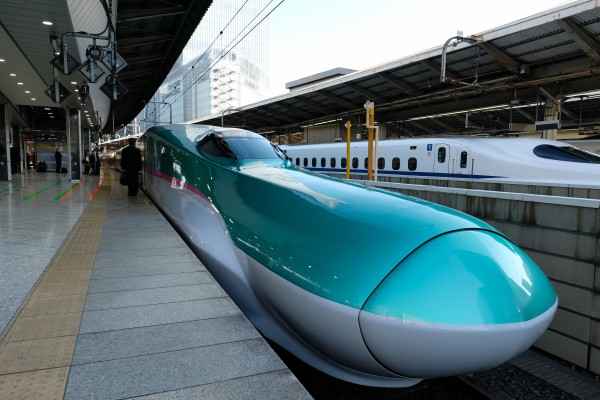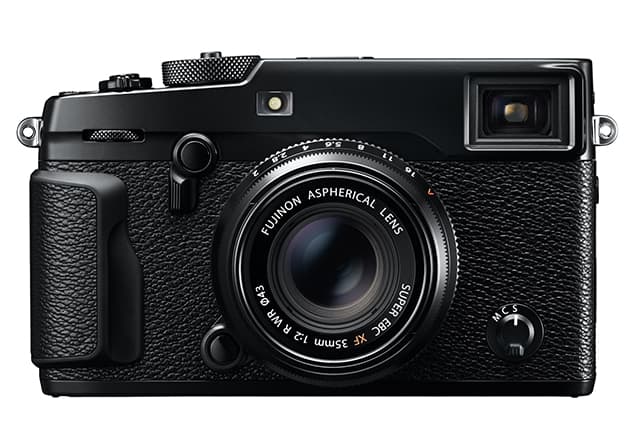Fujifilm’s new flagship model in the X-Series has finally surfaced in the form of the X-Pro2. Sitting above the mighty X-T1 and X-T10, the Fujifilm X-Pro2 looks set to follow in the footsteps of their success and becomes the out-and-out replacement for the X-Pro1. Fiercely rumoured and eagerly awaited by professionals and advanced amateur photographers across the world, the Fujifilm X-Pro2 has been in the offing for quite some time. Now it’s finally here, is it the camera we’ve all been waiting for?

Michael Topham had the opportunity to try out the new X-Pro2 prior to its launch at a Fujifilm press event
Features
A quick glance at the body shape and design suggests the Fujifilm X-Pro2 isn’t radically different to the X-Pro1 on the outside. Delve a little deeper beyond the surface though and you quickly realise there’s more to the X-Pro2 than initially meets the eye. The headline feature is its new 24-million-pixel X-Trans CMOS III sensor that teams up with a new and improved EXR image processor that’s claimed to be four times faster than its predecessor. The pairing of the new sensor and processor delivers multiple benefits – the improved ISO range sees the X-Pro2 offer a standard output sensitivity of 200-12,800 (extendable to 100-51,200) and there’s the option to shoot continuously at up to 8fps, where the X-Pro1 could only manage a burst of 6fps.

Can you spot the differences between the X-Pro2 and its predecessor the X-Pro1?
Advancing on the X-Pro1’s 49-point contrast-detect autofocus system, the X-Pro2 provides a hybrid phase and contrast detection autofocus system. There are 77 focus points across the screen in Single AF mode with 49 of these points being of the phase detection type. Switch to AF tracking mode and there are 273 focus points across the screen, 169 of which are phase detection. A new joystick controller can be used to move the AF point and the X-Pro 2 also inherits the zone and wide/tracking modes first seen on the X-T10.

The X-Pro2 shares the same retro appeal as the X-Pro1, albeit with subtle modifications across the body
The viewfinder and rear screen have both been refined as well. In similar fashion to the X-Pro1, the Fujifilm X-Pro2 features a hybrid viewfinder that marries the best of both optical and electronic views. The viewfinder selector lever at the front of the body switches between optical and electronic viewfinder, with the former offering 92% coverage and the latter covering 100% of frame. The refresh rate is claimed to be 40% faster and both the size (0.48in) and the resolution (2.36-million-dot) are superior to that of the X-Pro1. Viewing of images at the rear has also been enhanced with a new 3in, 1.62-million-dot screen. Unlike Fujifilm’s all-new APS-C pocket compact, the X70 it doesn’t support touch operation, neither is it the tilt-type found on the Fujifilm X-T1 and X-T10.

ISO sensitivity is changed by lifting and twisting the shutter speed dial on the top plate
The Fujifilm X-Pro2 has a mechanical focal-plane shutter like the X-Pro1, but in addition there’s an electronic shutter feature, which provides completely silent operation and the option to increase the shutter speed from the mechanical shutter’s 1/8,000sec limit right up to 1/32,000sec. Ideal for shooting wide-open with fast Fujinon lenses in bright conditions, it can also save the hassle having to attach ND filters. Those who like to shoot subjects in a discreet and quiet manner will also be glad to know there’s a silent shooting mode.

A view of the all-new 24MP APS-C X-Trans CMOS III sensor with primary colour filter
Other features worthy of mention include a new Acros black & white film simulation mode that applies additional grain and contrast, a dual SD card slot at the side as well as a new graphical user interface that features a new font and a customisable my menu function. Anyone wishing to shoot video has the option of shooting Full HD (1920×1080) footage but the fact Fujifilm has decided to leave 4K out, despite saying that the new processor is capable of supporting it, suggests Fujifilm has clearly focused their attention on producing the best camera for stills shooting. The X-Pro2 accepts the same NP-W126 battery as the X-Pro1 and three power modes – high performance, standard and economy – offer varying levels of stamina from 210 shots per charge to 250 and 330 shots respectively.
Build and handling
From the front you’ll be hard pushed to notice a difference between the X-Pro2 and X-Pro1. Those with an eye for detail will notice the Fujifilm X-Pro2’s new control dial at the front that allows users to manually adjust shutter speed when the dial on the top plate is set to its ‘T’ setting. This new front control dial is rather deeply recessed into the body much like the rear control dial. Merging ISO and shutter speed control into one dial on the top plate may seem like an ingenious idea, but during my hands-on experience I found myself occasionally adjusting shutter speed when attempting to change the ISO. Other downsides are that the ISO values are fairly small to read, they appear upside down when the shutter speed is set to around 1/60sec and are not illuminated, meaning you’ll need to refer to the info display on screen or, in low light, look through the viewfinder to see what it’s set to. The pre-production sample we used didn’t offer the option to adjust the ISO via the quick menu.

The Fujifilm X-Pro2 features revisions to both the body and the dials. The construction of the body is made up of four aluminium panels compared to three on the X-Pro1, and the grip has been re-sculpted to improve the feel in the hand. Finished in semi-gloss black paint, the body is weather resistant to match Fujinon lenses that carry the WR designation and it becomes the world’s first mirrorless camera to feature a dual SD card slot. A glance at the top plate reveals that ISO control is now merged with the shutter speed dial. Rotating the dial in the usual way adjusts the shutter speed and by raising the dial and rotating it you take direct control of ISO. There’s also +/-3EV control from the exposure compensation dial as well as a new ‘C’ setting. At the rear is a fabulous new joystick that can be used to navigate intuitively (including diagonally) the improved graphical user interface or nudge the focus point around the frame.

First impressions
The X-Pro1 was a big hit with those after a digital rangefinder and the all-new Fujifilm X-Pro2 looks set to go one better. It shares a striking resemblance with its predecessor in terms of its body design, but the subtle refinements Fujifilm has made are designed to make it much more practical and enjoyable to use – the new AF toggle at the rear being one example. Though I wasn’t sold on the idea of incorporating ISO control with shutter speed dial during my brief hands on, the increased resolution of both the rear screen and the viewfinder are well received.

We’ll have to wait until our review sample arrives before we get a chance to run it through the lab to find out how well the new 24-million-pixel X-Trans III sensor performs, but I can report that the speed of autofocus is extremely responsive and having so many AF points to choose from is another area where it excels over the X-Pro1.

In the hand, the body feels extremely robust, the new graphical user interface makes navigating the menu a breeze and a number of other additions such as the electronic shutter make the X-Pro2 a tempting choice for the working pro and serious enthusiasts, as well as X-Pro1 users looking to upgrade. The price of the X-Pro2 (body only) will be £1349 and it’s expected to be available from February.
Sample images
See the full range of sample images, in the What Digital Camera X-Pro2 gallery.










